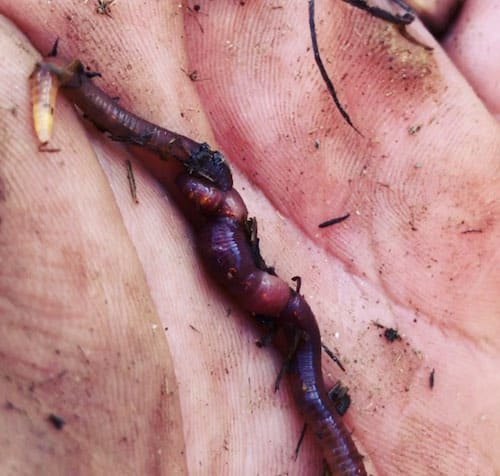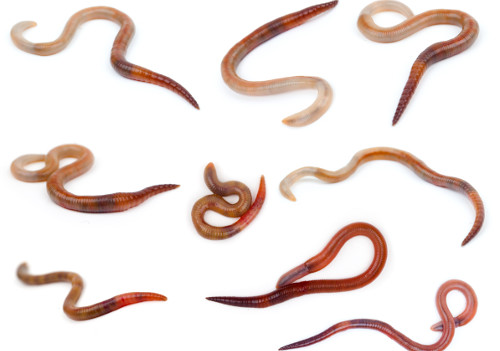Red Wiggler Worms - Essential for Healthy And Balanced and Productive Gardens
Red Wiggler Worms - Essential for Healthy And Balanced and Productive Gardens
Blog Article
Optimizing the Conveniences of Red Wiggler Worms: A Comprehensive Handbook for Home Gardeners and Urban Farmers
In the world of sustainable horticulture practices, red wiggler worms stand as unrecognized heroes, silently transforming organic waste right into nutrient-rich castings that can function marvels for soil health and wellness. As home garden enthusiasts and urban farmers significantly seek ecologically pleasant and cost-effective ways to improve their yards, the potential advantages of utilizing the power of red wigglers can not be overstated. From reducing cooking area waste to growing healthier plants, the usage of these simple animals provides a myriad of advantages. By exploring the ins and outs of exactly how to properly care for and take full advantage of the benefits of red wiggler worms, people can open a wide range of possibilities for boosting the sustainability and performance of their gardening endeavors.
Recognizing Red Wiggler Worms
Red Wiggler worms, renowned for their reliable composting capabilities, are a varieties of earthworms widely used in vermiculture methods. These worms, medically known as Eisenia fetida, flourish in decaying natural product, making them perfect prospects for composting (Red Wiggler Worms). Red Wigglers are ravenous eaters, efficient in eating their own weight in organic waste daily. Their digestion procedure breaks down raw material into nutrient-rich castings, which are an important source for enriching soil and promoting plant growth.
One trick characteristic of Red Wiggler worms is their reproductive rate. These hermaphroditic creatures possess both male and female reproductive body organs, enabling them to replicate swiftly under beneficial conditions. A mature Red Wiggler can produce numerous spawn in a brief duration, making certain a steady population within a composting system.

Establishing a Worm Container
When establishing a worm bin for vermiculture functions, appropriate preparation and interest to detail are crucial for creating a conducive environment for Red Wiggler worms. Begin by selecting a suitable container for your worm bin.

Location the worm bin in a trendy, dark place away from straight sunlight and extreme temperature levels. Frequently keep track of the dampness levels, including water if the bed linen really feels completely dry or flaky. Feed the worms a well balanced diet of vegetables and fruit scraps, staying clear of citrus fruits, onions, and spicy foods. By complying with these actions, you can set up a thriving worm bin that will effectively refine natural waste right into nutrient-rich vermicompost for your yard.
Feeding and Keeping Worms
Making sure a well balanced and nutritious diet is important for the health and efficiency of Red Wiggler worms in a vermiculture system. Red Wigglers are ravenous eaters, efficient in consuming their very own body weight in raw material daily. To preserve a growing worm population, it is necessary to provide them with a range of food scraps site here such as fruit and veggie peels, coffee premises, tea bags, and smashed eggshells. However, it is crucial to stay clear of feeding them citrus fruits, onions, garlic, milk items, meat, and oily foods as these can be hazardous to the worms or trigger undesirable smells in the container.
Proper moisture levels are also vital for the wellness of Red Wiggler worms. The try this site bed linen needs to feel like a moist sponge, supplying adequate moisture for the worms to breathe through their skin. Routinely inspect the moisture degrees and readjust by adding water or dry bed linen material as required. Additionally, maintaining correct temperature level problems between 55-77 ° F(13-25 ° C )will certainly ensure ideal worm activity and recreation. By faithfully checking their diet regimen, moisture, and environmental problems, home gardeners and metropolitan farmers can sustain a healthy and balanced and efficient Red Wiggler worm populace for composting objectives.
Harvesting Worm Spreadings
To successfully remove nutrient-rich worm castings from the vermicompost, a methodical harvesting procedure is essential for taking full advantage of the composting advantages. The initial action in harvesting worm spreadings is to motivate the worms to migrate to one side of the container.
After the castings have been harvested, it is essential to divide any remaining worms from the spreadings to prevent hurting them during storage or application. One efficient approach is to create cone-shaped stacks of castings under intense light. Worms will instinctively move far from the light, permitting for simple separation and elimination.
Last but not least, the gathered worm castings need to be stored in a cool, dark, and completely dry area to preserve their quality and effectiveness as a nutrient-rich soil amendment. By complying with these actions, home gardeners and urban farmers can make the most of the advantages of red wiggler worms in their vermicomposting systems.
Using Worm Castings in Horticulture
The unification of nutrient-rich worm spreadings into garden soil can substantially boost plant growth and overall dirt wellness. Worm castings, also called vermicast, are a natural fertilizer created by red wiggler worms as they damage down raw material. These castings are rich in vital nutrients like nitrogen, phosphorus, potassium, and valuable germs that advertise plant growth and enhance dirt framework.
When utilizing worm spreadings in gardening, it is vital to blend them completely into the dirt or use them as a leading clothing around plants. The slow-release nature of worm spreadings makes certain a constant supply of nutrients to plants in time, reducing the threat of nutrient leaching and click to read more promoting long-term dirt fertility. In addition, worm castings aid improve soil oygenation, water retention, and microbial activity, producing a healthy environment for plant roots to grow.

Conclusion
In conclusion, the application of red wiggler worms in home gardening and city farming can considerably benefit soil health and plant development. By recognizing how to establish and keep a worm bin, feed the worms appropriately, and harvest their nutrient-rich castings, gardeners can maximize the benefits of these earthworms. Integrating worm spreadings right into gardening methods can boost soil fertility and overall plant productivity. On the whole, red wiggler worms offer a lasting and efficient option for improving yard and farm yields.
In the realm of lasting gardening practices, red wiggler worms stand as unhonored heroes, silently changing natural waste right into nutrient-rich spreadings that can work marvels for soil health and wellness.When establishing a worm bin for vermiculture functions, proper prep work and focus to detail are important for developing a helpful atmosphere for Red Wiggler worms. The initial action in harvesting worm castings is to urge the worms to move to one side of the bin. Worm spreadings, likewise recognized as vermicast, are an all-natural fertilizer created by red wiggler worms as they damage down natural matter. By understanding exactly how to set up and keep a worm bin, feed the worms properly, and collect their nutrient-rich castings, garden enthusiasts can optimize the benefits of these earthworms.
Report this page